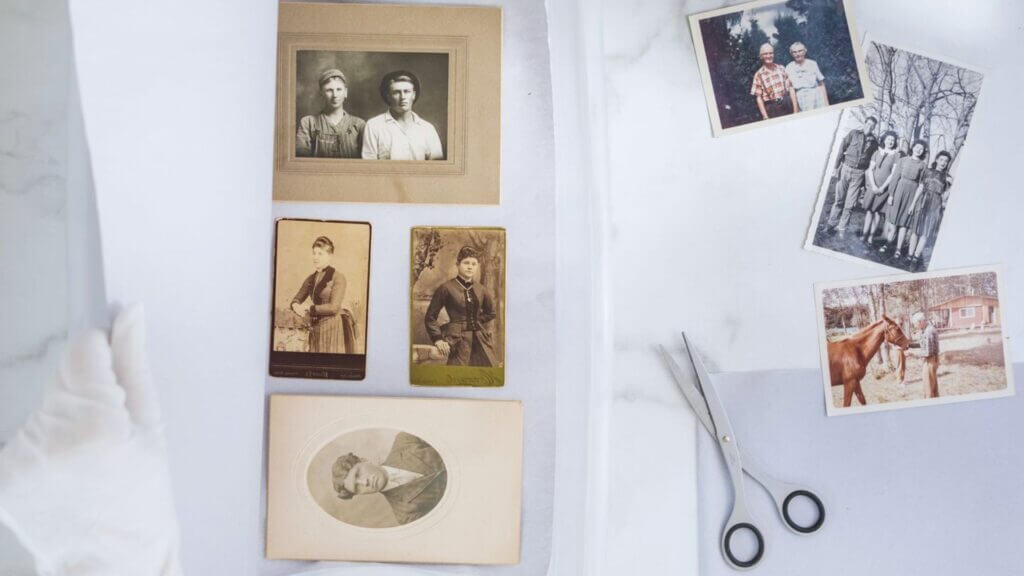Protecting your photographs can sometimes become an oversight in everyday life. External elements like air pollutants, moisture and heat can all cause damage to your photographs. Signs of damage include fading, ink bleeding, yellowing or cracking. If you notice this, you must look for ways and professionals to help restore them. To avoid having to do that, here are some tips to help protect your photos.
Humidity And Temperature Control
TIP: Keep your photos in a well-ventilated area. A stuffy room might result in damage to the image. It could be a big mistake if you have considered storing all your old photos in the garage or roof space. These areas in a home will fluctuate in humidity as they are generally not climate controlled. High humidity leads to a higher risk of destructive mould growing on pictures and can result in fading and discolouration.
The humidity and temperature effect on photo prints is some of the main factors which you can actually control. Storing your pictures in the right humidity and temperature can assist you in protecting your pictures.
Many experts suggest the following temperature ranges for several types of photos:
- Dye sublimation: Maximum 20 degrees Celsius
- Digital electrophotography: Maximum 20 degrees Celsius
- Inject (pigment and dye): Maximum 4 degrees Celsius
- Chromogenic photos: Maximum 4 degrees Celsius
- Traditional black and white photos: Maximum 12 degrees Celsius
The suggested humidity range for the abovementioned photograph styles to protect your photographs is 30 to 50 per cent.
Air Pollution And Pollen
TIP: Keep your photos in air-tight photo frames and containers.
Pollution from a wide range of sources will negatively affect the quality of your pictures. Many pollutants are evident around your home, such as the storage area, the housing products around your property, nearby neighbouring materials, or even the used framing products. Some gases can also cause damage, like nitrogen dioxide and ozone, and may cause bleeding and yellowing of your photos. To protect your pictures from air pollutants and gases, you need to choose air-tight frames, which can help to keep away from the different kinds of air pollutants and dust.
How To Handle Your Photographs
TIP: Wear gloves and never roll or stack your photos.
We all remember being told to nurse the sides of a photograph to avoid getting ‘fingerprints’ on the photo. The oils in our fingers create a fingerprint on the image and can cause other issues like colourant scratching, surface cracking, smearing and scuffing. To prevent these issues, you should use precautions of gloves when you are handling photos.
Photo Album Storage
TIP: Choose acid-free sleeves in albums
A great way to store physical photographic mementos for safekeeping is in air-tight sealed sleeves, frames and containers. Many people will keep their photographs in photo albums so they can easily access them. The album must have acid-free sleeves to store the photos. If the plastic sleeves within the album aren’t acid-free, they will degrade, damage your photos, and cause sticking. Also, ensure you place the correct size photos in sleeves; never force the sleeves with too many photos, as the images will stick together, and all photos can be damaged.
Photographic Backups
TIP: Make a digital copy of your photographs and albums
If a natural disaster hits, losing photographs can be devastating, even more so if all you have are prints of your family’s old pictures. While ‘things’ can be replaced, photographs cannot. Unfortunately, scanning your images and saving them on a computer is not enough because you might still lose them if your computer crashes with a virus hack or a data breach. Portable hard drives can be an option for you to store your memories on. They are small enough to store in your ‘emergency bag’. You could also make a photo book as a backup and keep it somewhere, like a fireproof safe deposit box.
A digital cloud-based backup is the best way to safeguard your photographic memories. However, choosing the correct option is critical. While social media platforms can store your photos, not everyone is comfortable uploading images to a ‘public’ forum. Also, the photos are compressed to a lower resolution, so they won’t look as great if you need to print them.
There are dedicated online services that preserve images, whether from your phone, a digital camera or a film camera. But with anything, read through their terms of service before entrusting precious memories into any service. Check their terms and conditions and research how each company handles your photo retention and what rights you will have to your photos once uploaded to the site. There are heaps of providers with little to no cost, like Apple iCloud, Google Drive, and Photobucket, to name a few.
Our friendly team at Mobile Frames 2 U have over 20 years of experience and are always happy to assist and answer any questions. We will come to you and will take you through all the framing options and even suggest the most appropriate framing option for your home or office to ensure you can keep your treasured images and memories protected.


0 comments on “How To Keep Your Photos Protected”